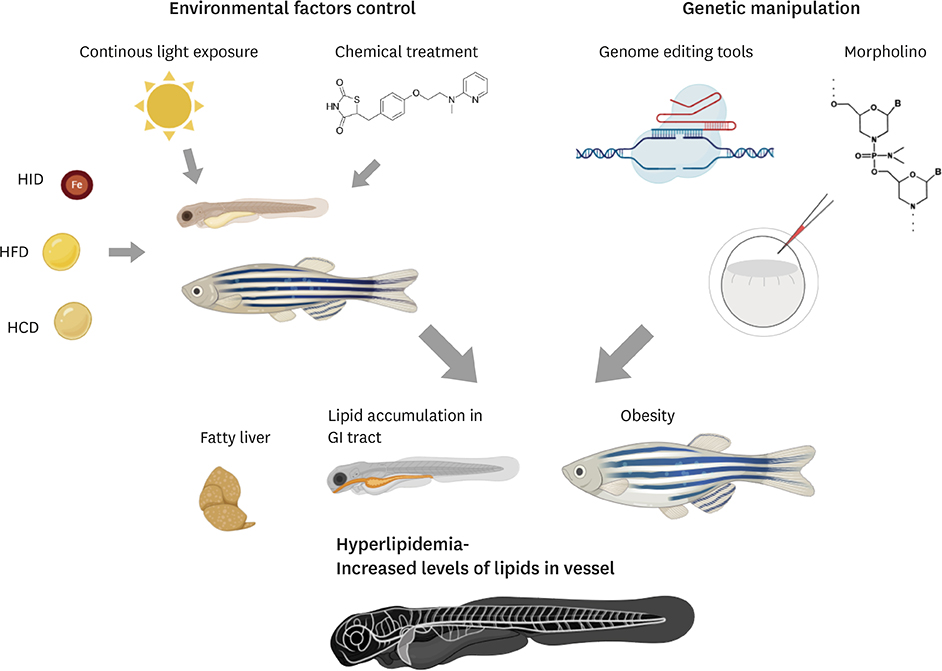Fig. 2 Zebrafish hyperlipidemia model. As shown in humans, dyslipidemia in zebrafish is similarly induced by either environmental or genetic factors. Environmental factors such as continuous light exposure, chemical treatment, and diet regimens can influence lipid metabolism and predispose to dyslipidemia in zebrafish. In addition, abrogation of genes associated with lipid metabolism such as nr1h3 and apoc2 using genome editing tools or morpholino results in dysregulated lipid metabolism, leading to fatty liver, obesity and lipid accumulation in vasculature and other organs. HID, high-iron diet; HFD, high-fat diet; HCD, high-cholesterol diet.
Image
Figure Caption
Acknowledgments
This image is the copyrighted work of the attributed author or publisher, and
ZFIN has permission only to display this image to its users.
Additional permissions should be obtained from the applicable author or publisher of the image.
Full text @ J Lipid Atheroscler

